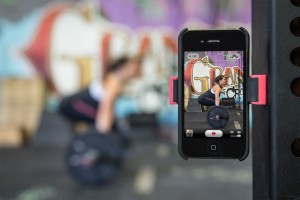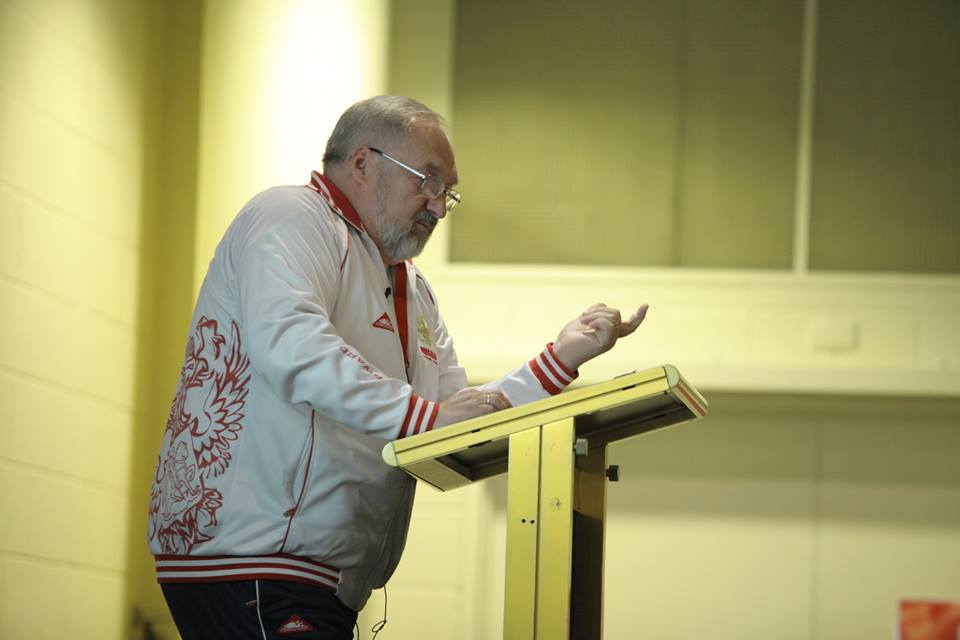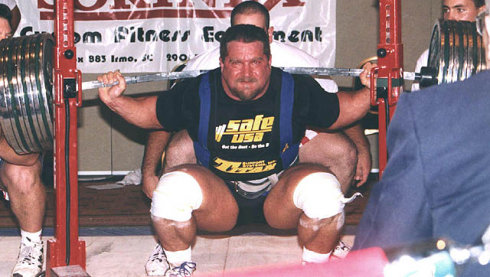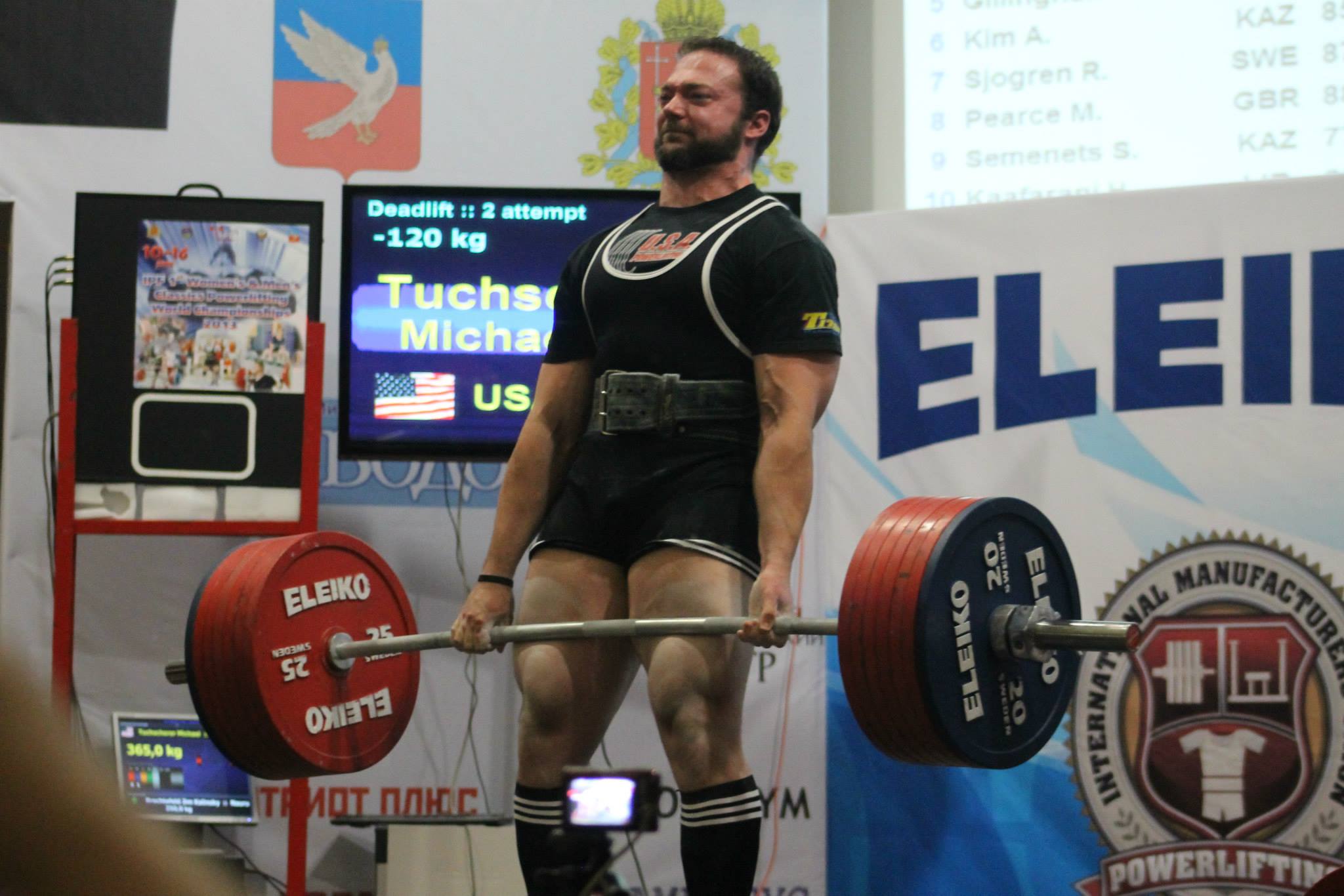In today’s day and age where nearly every single phone has a video camera built-in, you have no excuse not to be recording your workouts. If you get your training on video, it will benefit you in a myriad of ways. Let’s address some of the most important reasons you should be filming all of your sets.

The Perchmount Fit works well as a gym tripod.
Form Feedback
Is your coach present at all of your workouts? Do you even have a coach? How about an intelligent and reliable training partner?
If not, you’re missing out on the single best way to improve your technique: real-time feedback! Nothing beats being able to implement a technique change right smack dab in the middle of the set. Real-time feedback allows you to truly “feel” the difference the form change is making; real-time feedback allows you to ensure that you know what it “feels” like when you’re doing it right.

The legendary powerlifting coach Boris Sheiko. Photograph: http://www.facebook.com/BorisSheikoOfficial
There is a phenomenon that all lifters experience called “form creep”. If you take a lifter with good form, and remove them from all feedback, they’ll start making little errors here and there. Over time, these little errors become more and more regular. Then, the errors compound and become bigger errors. After several months, a lifter who previously had fantastic technique might be left with mediocre form. Form creep is the term used to denote this slow deterioration of technical ability.
With form creep in mind, it is important to note that many of us train without coaches or even entirely alone. While you simply cannot replicate real-time feedback, being able to get your reps on film allows you to at least get interset feedback which is still invaluable. All you have to do is check the film to see what you need to fix for your next set. This process not only prevents form creep from happening workout to workout, it helps prevent form creep from set to set (real-time feedback prevents form creep from rep to rep — even better!).
Using Interset Feedback: Technique
I highly recommend that you film every single one of your sets including your warmups. Skill, like strength, takes an enormous amount of time to build. Perfecting a movement pattern takes thousands and thousands of repetitions. For every repetition that you perform with poor technique, you’ll need to compensate with a handful of perfect repetitions.
Why waste your warm-ups by sloppily rushing through them? Instead of accumulating poor reps during your warm-ups, film them and ensure you accumulate perfect reps. If you’re checking your form between each set, by the time your heavy sets roll around, your technique will be on point. Rather than having to try and figure it out once you get there, you’ll already be dialed in; you’ll already know what to focus on. You’ll be ready and your performance will increase.

I learned about interset feedback from Kirk Karwoski. He trained in the 80s and 90s with access to nothing more than crappy camcorders. He STILL filmed every set. So should you.
Using Interset Feedback: Weight Selection
Interset feedback will improve your weight selection during your workouts.
Anyone who has been training for more than a few months knows that you can’t always fully trust the way your body feels. Many people report setting all-time PRs on days when they were sick or had massive hangovers. Likewise, sometimes you can feel great and manage to underperform. Video can give insight into the truth of that training session. If you’re watching the video, and your bar speed is fantastic, regardless of how you feel, you’re probably set-up to have a good day.
Armed with film of your heavy sets, you’ll have a better idea of when to keep going up and when to stop. At some point in their training, everyone single lifter on the planet has had their ego get in the way and, likewise, every single lifter has also talked themselves out of some hard work. Video is objective and it will provide you some “data” to weigh against your subjective feelings. You’ll be less likely to make stupid jumps and more likely to persevere when you don’t feel up to it.
Analyzing Training Footage
Film also provides you an objective way to analyze your lifting. Everyone has different strong points and weak points. Some are weak off the floor in the deadlift whereas others are strongest off the floor. Some people can’t get the bar off their chest in the bench whereas others stall right at the top. By having film, you’ll have an objective way to tell exactly where you’re running into trouble. You’ll be able to “see” where the reps start slowing down. This will allow you to more intelligently and effectively select your assistance exercises.
In fact, IPF World Champion Mike Tuchscherer, owner of an 850lbs deadlift, specifically provides a service he calls “individual weakness analysis”. Using training footage and special software, Mike is able to pinpoint the exact spot in the range of motion that your bar speed begins to slow down. You see, it isn’t where the bar stalls, but where it begins to slow that you are weakest. From this data, and his ten plus years as a powerlifting coach, Mike then makes recommendations on special exercises to help balance your force curve.
See, that’s the thing, film allows you to get third party feedback. With today’s technology, the greatest powerlifters in the world are readily accessible through social media. Because I film all of my sets, I can get informed feedback from world record holders and national champions. I do so on a weekly basis. Even if you have a coach or a training partner, you can’t get that third party feedback without film.
Video Journaling
Videos serve as a fantastic addition to any well-kept training log. With a video record, you’ll be able to analyze form improvement over time. You’ll be able to tell whether your training in the previous meet cycle cured your old sticking points…or whether it didn’t. And, of course, you’ll just have something to look back on for posterity’s sake. Few things are more gratifying than looking at a video from several years ago and realizing how much bigger and stronger you’ve gotten.
And, who knows? Maybe you’ll even capture something legendary:
https://www.youtube.com/watch?v=Oo1tU1YqPp0
Remember, if you have a phone, there is no excuse not to film! If you don’t have a way to set up the camera properly, grab a Perchmount Fit! You can hook it up anywhere in the gym and get a crystal clear, perfect angle to analyze your technique. Filming your training can help take you to the next level; I believe in that much. Don’t procrastinate! Film your NEXT workout.
Like this Article? Subscribe to our Newsletter!
If you liked this articled, and you want instant updates whenever we put out new content, including exclusive subscriber articles and videos, sign up to our Newsletter!
Questions? Comments?
For all business and personal coaching services related inqueries, please contact me:
